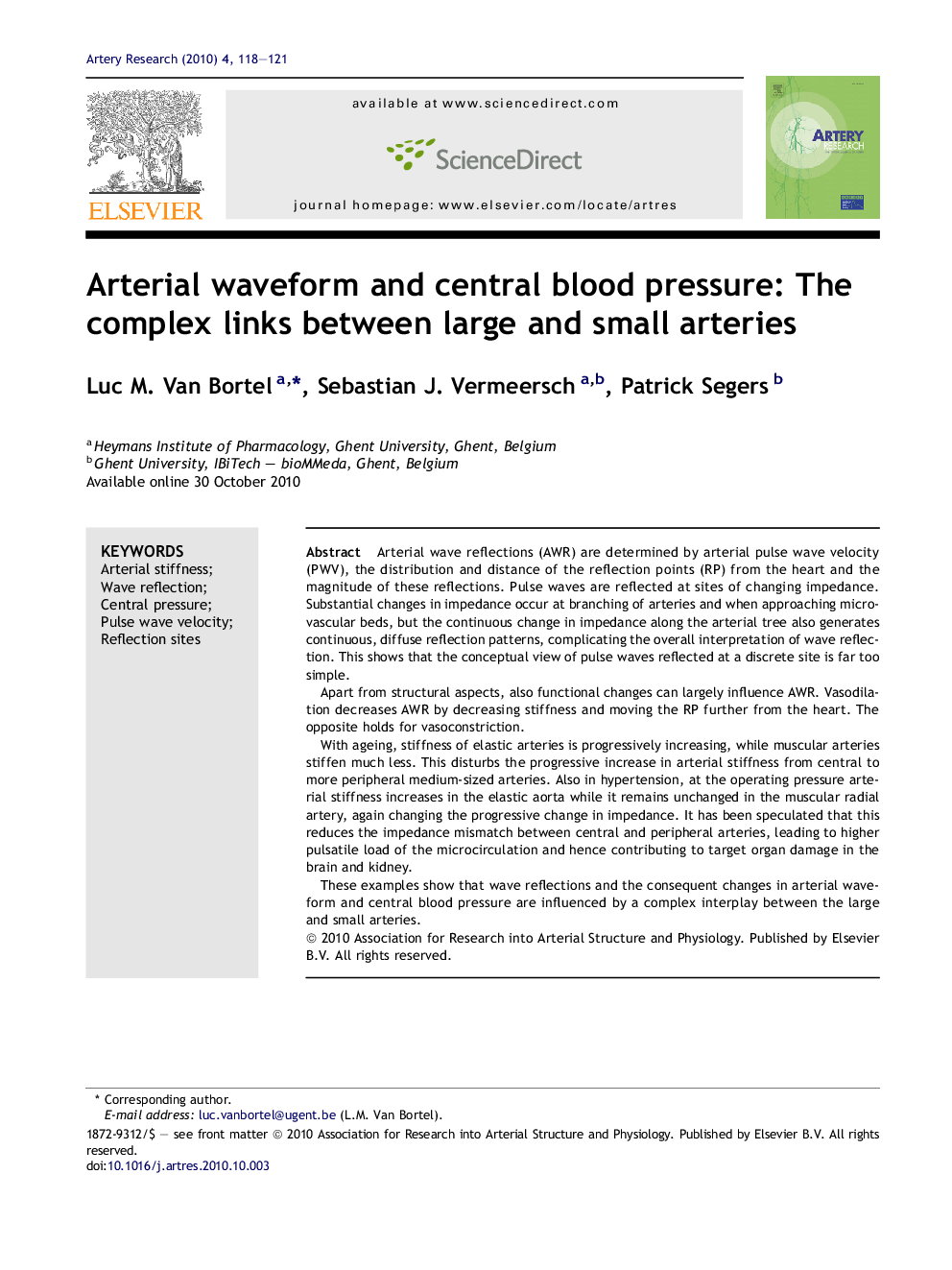| Article ID | Journal | Published Year | Pages | File Type |
|---|---|---|---|---|
| 2892081 | Artery Research | 2010 | 4 Pages |
Arterial wave reflections (AWR) are determined by arterial pulse wave velocity (PWV), the distribution and distance of the reflection points (RP) from the heart and the magnitude of these reflections. Pulse waves are reflected at sites of changing impedance. Substantial changes in impedance occur at branching of arteries and when approaching microvascular beds, but the continuous change in impedance along the arterial tree also generates continuous, diffuse reflection patterns, complicating the overall interpretation of wave reflection. This shows that the conceptual view of pulse waves reflected at a discrete site is far too simple.Apart from structural aspects, also functional changes can largely influence AWR. Vasodilation decreases AWR by decreasing stiffness and moving the RP further from the heart. The opposite holds for vasoconstriction.With ageing, stiffness of elastic arteries is progressively increasing, while muscular arteries stiffen much less. This disturbs the progressive increase in arterial stiffness from central to more peripheral medium-sized arteries. Also in hypertension, at the operating pressure arterial stiffness increases in the elastic aorta while it remains unchanged in the muscular radial artery, again changing the progressive change in impedance. It has been speculated that this reduces the impedance mismatch between central and peripheral arteries, leading to higher pulsatile load of the microcirculation and hence contributing to target organ damage in the brain and kidney.These examples show that wave reflections and the consequent changes in arterial waveform and central blood pressure are influenced by a complex interplay between the large and small arteries.
